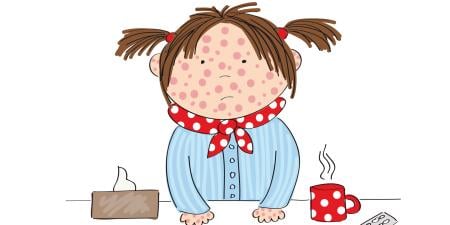Case
A nine-year-old girl named Sybil has been in five different grade schools because of antisocial behavior. Since the age of six, she has frequently initiated physical fights using broken bottles and bricks. In the past year, to the horror of her neighbors, Sybil stole several of their cats, doused them in gasoline and set them on fire. When asked why, she stated that she thought it was “funny” and that she likes “watching what they (the cats) do when they are on fire.” Most recently, she threatened to kill her second-grade teacher for preventing her from attending recess. Her family is no longer able to control her violent outbursts and has brought her to a psychiatric inpatient facility, Prentiss Hospital, in a major urban area. This is Sybil’s third such hospitalization.
When Sybil is first admitted to Prentiss, Timothy, a fourth-year medical student planning to pursue a psychiatry residency, is asked to interview her family. Sybil was brought to the hospital by her paternal grandmother and her father, who is wheelchair-bound. He has been in and out of jail for drug-related offenses since Sybil’s birth and is agitated throughout the interview. Sybil’s grandmother tells the story of Sybil’s life. At three months of age, she was removed from her mother’s custody because of neglect and has only seen her mother twice since then. She seemed to be doing OK until the age of six (records show she has a normal IQ and was doing well in school), but between the ages of six and seven she became increasingly aggressive and exhibited sexually inappropriate behavior. Sybil's performance in school deteriorated rapidly, and she currently has domestic battery charges pending against her in court for hitting her cousin in the face with a brick. Her family appeared relieved but also concerned when they left Sybil at Prentiss Hospital that day, no longer able to cope with a problem they did not fully understand.
During her weeks-long stay at Prentiss, Sybil exhausts the staff with her violent outbursts and obsessive need for attention. Day after day, Tim sits down to talk with her and feels that he is getting nowhere. She won’t look him in the eye. Her answers to his questions are one-word responses, non sequiturs or deliberate provocation. “When I get out of here I am going to buy me some weed and some new jeans and go with my boyfriend.” Or “I like to be mean more than I like to be nice.” Weeks pass without stable emotional contacts; Sybil is no longer in touch with her family because phone calls home produced more volatility than calm or reassurance. Sybil herself has lost interest in her family. Early in her hospitalization, Sybil’s psychiatrist prescribed a mood stabilizer and an anti-psychotic medication, which are mildly effective in controlling her behavior. The drugs cause a blunted affect and are sedating.
Tim begins to worry that they are losing Sybil and that Sybil is becoming lost to herself. Her tenuous ability to hold on to relationships is being pushed to the brink, and he wonders if the staff shouldn’t be more insistent on family connections; isn’t some family connection, however difficult, better than none?
Commentary
The hypothetical case of Sybil raises several interesting questions that clinicians commonly face in child and adolescent psychiatry. The first of these—that of custody—is central to the issues of consent and treatment. In Sybil’s case, we are not told who her legal guardian is. The duty to protect minors from abuse or neglect is reflected in state and national mandatory reporting laws and is balanced by parental rights and the rights of others in society. The UN General Assembly Convention on the Rights of the Child further delineates the duties and responsibilities that the nations have to insure the safety of children [1].
We are told that Sybil’s mother lost custody (both physical and legal, we assume) for reasons of neglect when Sybil was three months old. Her grandmother tells us that Sybil has only seen her mother twice since. Sybil’s grandmother appears to be the legal guardian, but she may be a foster parent. It is also possible that Sybil’s father remains a legal guardian. No mention is made of his parental rights having been terminated.
It is important when evaluating children to determine not only who the legal guardian is, but also who the primary caregiver is. Children who grow up in neglectful or abusive homes have more impairment in social and psychological functioning, do less well in school and are at increased risk for severe behavioral problems when compared with children from homes where they are not neglected or abused. Sybil’s living situation is constantly changing since her father has been in and out of the home. Her current presentation of conduct disorder including hitting her cousin in the face with a brick reflects severe psychopathology. It is unknown if Sybil would have fared better in non-relative foster care, but a recent study by Bilha Davidson-Arad et al. shows that when children are removed from neglectful and abusive homes, their quality of life improves [2]. A study of children in the Illinois child welfare system by Romansky and colleagues highlights the importance of living arrangements and posthospital services in preventing re-admission [3]. Courts have repeatedly upheld the opinion that the state’s duty to protect the interests of minors is greater than the rights of the parents to make decisions for their minor children. This is consistent with the Child Abuse Prevention and Treatment Act [4].
We must consider the competence of Sybil’s guardian to make decisions. If her father is her guardian, and he presents as agitated and may still be using drugs, then the treating physician is obligated to question his competence and ability to put Sybil’s best interests first. If he is her guardian and is basing treatment decisions on his own needs and interests rather than on Sybil’s, the state will probably appoint a guardian for the purpose of medical decision making.
Informed consent is directly tied to legal but not physical custody; only the legal guardian can give consent. So even though Sybil lives with her father, i.e., he has physical custody, he may not be responsible for consenting to Sybil’s treatment. Informed consent is based on decision-making capacity, e.g., evidence of choice, rational reasoning and inferential understanding of proposed courses of action and their probable outcomes [5].
Sybil’s current developmental level must be considered when including her in consent and treatment decisions. Children who have been abused and neglected often have more difficulty understanding and making important independent decisions [6]. At nine years old, normal children are less competent than adults in understanding information and using rational decision making [5]. Piaget’s classic work on development defines how cognition develops. Formal operations, the final stage, signals the ability to do hypothetical-deductive reasoning. Children do not achieve this stage of development until after 11 years of age [7] and so are unable to give informed consent before that time.
Once treatment consent has been obtained from Sybil’s legal guardian, the health care team must consider the family's and Sybil’s treatment preferences, with the first decision being the best setting for treatment. Sybil is too severely ill to be treated in an outpatient setting, but she also has charges pending against her. It is unlikely that she will be sent to jail at the tender age of nine. She may be sent away from her family to live in a juvenile hall, a possibility that forces us to ask whether it is fair to punish someone for a psychiatric disorder. This complicated question weighs the duty of society to protect its most vulnerable members (other children) against Sybil’s right to treatment. It is clear from a review of the research that children who are exposed to peers with similar problems (such as would be found in juvenile detention) and who do not have strict parental oversight fare much worse in the long run [8].
Sybil’s severe behavioral problems fit the criteria for conduct disorder, but other diagnoses must be explored. Substance abuse should be considered given her comments about wanting “to buy me some weed,” and, in light of the reports of her sexually inappropriate behavior, bipolar or post-traumatic stress disorder could be present. Regardless of her diagnosis, it is clear that her family must be involved in treatment but has not been. Neglect should be considered and reported according to mandatory reporting laws. The family should come for regular working visits with the treatment team to learn how to care for Sybil when she returns home, especially given her decompensation around simple phone calls.
Timothy, the medical student working with Sybil, raises an important point about the family’s disconnectedness. The other question that must be raised is that of the staff’s withdrawal and possible burnout. It is understandable that the staff reports being exhausted. Sybil is extremely ill. She is homicidal and has injured animals and people. She is no longer functioning in school or society. Critically ill patients, in an ICU or on a psychiatric ward, are emotionally and physically tiring for staff. This may be because the staff have unreasonable expectations for Sybil’s outcome. Frequently health care professionals see a patient’s death or lack of improvement as their own failure [9]. It is important to explore both the treatment team’s expectations and the parent’s expectations. Communication between the team and the family about the true prognosis for Sybil may help to decrease the feeling of burnout. If they acknowledge how difficult it is to work with patients like Sybil and talk together as a team, her caregivers will better understand their own feelings of frustration. If they don't do this, the team runs the danger of having their counter-transference feelings interfere with their treatment of Sybil.
Understanding that Sybil is indeed ill may be difficult. Media portrayals and historical perspectives often represent psychiatric illness as a failure of character. Popular television shows such as “Malcolm in the Middle” suggest that children with attention deficit hyperactivity disorder and conduct disorder need military school rather than psychiatric treatment. If only one were a stronger or more self-disciplined person, then mental illness would not be occurring, or so the mantra goes. Unfortunately, this occurs not only in the popular media but also in our medical journals, one of which published an article a couple of years ago called “Evaluating Wickedness in Children” [10]. It is hard to imagine a seriously ill cancer patient in the midst of chemotherapy being held responsible for his or her illness in the same way that psychiatric patients are.
In sum, then, this case poses questions about custody and consent for treatment, along with the overarching concerns about psychiatric diagnosis and its treatment.
References
-
UN General Assembly. Convention on the Rights of the Child. Document A/RES/44/25. December 12, 1989. Available at: http://www.cirp.org/library/ethics/UN-convention/. Accessed September 8, 2006.
- Davidson-Arad B, Englechin-Segal D, Wozner Y. Short-term follow-up of children at risk: comparison of the quality of life of children removed from home and children remaining at home. Child Abuse Negl. 2003;27(7):733-750.
- Romansky JB, Lyons JS, Lehner RK, West CM. Factors related to psychiatric hospital readmission among children and adolescents in state custody. Psychiatric Serv. 2003;54(3):356-362.
-
Child abuse prevention and treatment and adoption reform, 42 USC sec. 67 (2005). Available at: http://www.law.cornell.edu/uscode/uscode42/usc_sup_01_42_10_67.html. Accessed September 4, 2006.
- Weithorn LA, Campbell SB. The competency of children and adolescents to make informed treatment decisions. Child Dev. 1982;53(6):1589-1598.
- Tan JO, Fegert JM. Capacity and competence in child and adolescent psychiatry. Health Care Anal. 2004;12(4):285-294.
-
Piaget J. Judgment and Reasoning in the Child. New York, NY: Harcourt Brace and Co; 1986.
- Rhule DM. Take care to do no harm: harmful interventions for youth problem behavior. Prof Psychol Res Prac. 2005;36(6):618-625.
- Kon AA. When parents refuse treatment for their child. JONAS Healthc Law Ethics Regul. 2006;8(1):5-10.
- Haroun AM, Haroun NS. Evaluating wickedness in children. Pediatr Ann. 2004;33(5):305-313.



